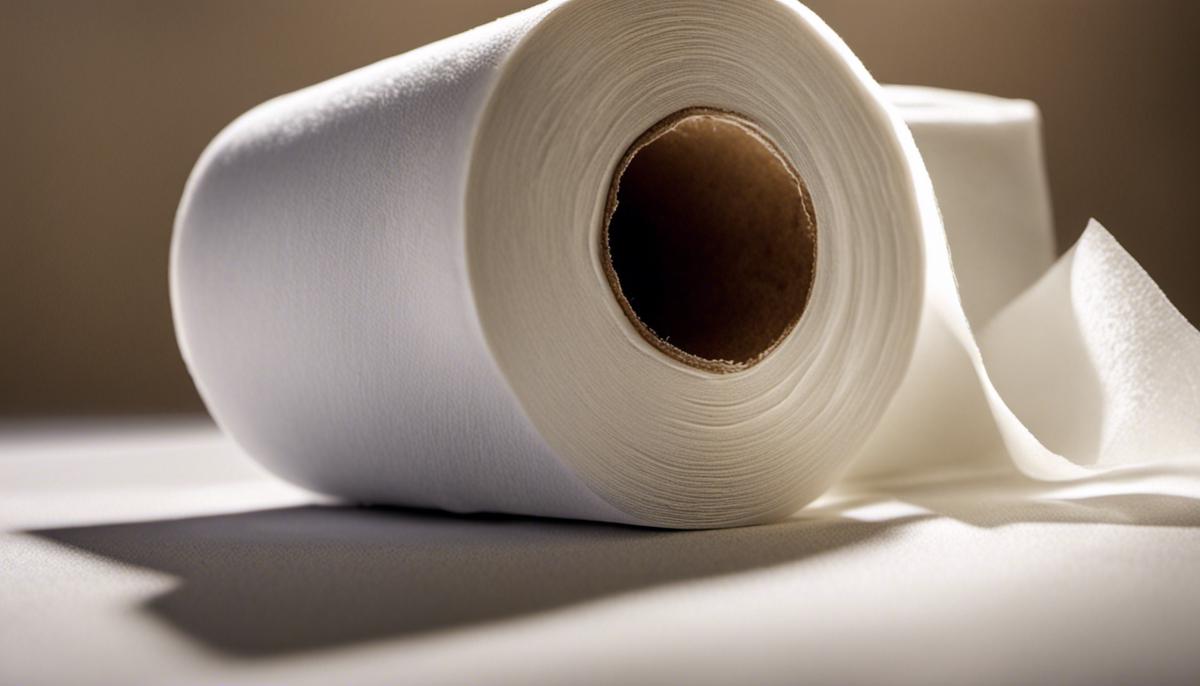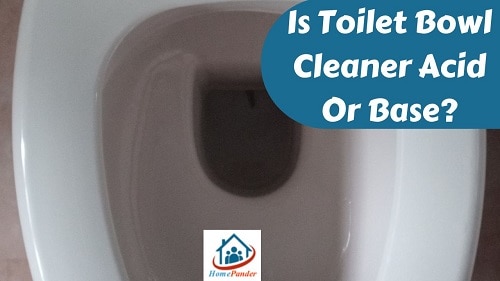Imagine reaching for a bite to eat, and instead of a delicious snack, you grab a roll of toilet paper.
For most people, this would be a strange and undesirable choice. But for some individuals, consuming non-food substances such as toilet paper can be a part of everyday life.
This unusual behavior can be associated with various health implications, both physically and psychologically.
Toilet paper, often overlooked as a mundane household necessity, has a complex manufacturing process involving materials and chemicals that can significantly impact human health when ingested.
Moreover, this act, often linked to specific eating disorders, can be an expression of a psychological condition known as Pica.
This in-depth exploration will shed light on the health consequences, medical perspectives, and strategies for prevention and treatment of such a habit.
| Question | Answer |
|---|---|
| Can you eat toilet paper? | No, it is not safe to eat toilet paper. |
| Is toilet paper edible? | No, toilet paper is not meant for consumption. |
| What happens if you eat it? | Eating toilet paper can lead to digestive issues, choking, or blockages. |
| Is there edible paper? | Yes, there are edible paper products, like rice paper or edible frosting sheets, designed for consumption. |
| Safe alternatives | Opt for a well-balanced diet with real food, not non-food items like toilet paper. |
Can You Eat Toilet Paper
No, you should not eat toilet paper. Toilet paper is not meant for consumption and can be harmful if ingested. It does not provide any nutritional value and can potentially cause digestive issues or choking hazards. Always use toilet paper for its intended purpose – personal hygiene.
Health implications of eating toilet paper
What is Toilet Paper Made Of?
Toilet paper is primarily made from tree pulp or recycled paper that is chemically treated, bleached, and then transformed into a thin, soft, and absorbent form.
It is designed to be broken down in water to facilitate flushing and the waste management process in sewage systems.
This paper does not contain any nutrients or substances that can benefit the human body.
Is Eating Toilet Paper Safe?
While ingesting a small piece of toilet paper might not necessarily harm you, consistently eating it can lead to potential health risks.
Given its design, toilet paper can expand when it comes into contact with fluids (like saliva or stomach acid).
This could lead to choking, especially if a large amount is swallowed at once. Moreover, since it doesn’t dissolve easily, it could potentially cause blockages in the digestive tract.
Health Risks and Consequences
Health consequences of eating toilet paper include digestive obstruction, malnutrition, and anemia, among others.
An obstruction in the digestive tract could lead to constipation or, in severe cases, require surgical intervention.
Meanwhile, relying on toilet paper as a food source can lead to malnutrition, since it lacks any nutritional value.
In addition, toilet paper contains bleaching agents and other chemicals which, in large quantities, may increase the risk of developing anemia or other blood disorders.
Eating Disorders and Pica
The act of consistently eating non-nutritive objects – such as toilet paper – is diagnosed as a psychological disorder called pica.
People with pica have an insatiable urge to eat items not typically recognized as food.
This condition is frequently associated with other mental health disorders like obsessive-compulsive disorder (OCD) and schizophrenia.
Patients with pica should seek professional help, as it can lead to serious medical complications.
A Note of Caution
It’s essential to understand that while inadvertently swallowing a small piece of toilet paper might not have harmful effects, especially due to its main ingredient cellulose being non-toxic, regularly doing so intentionally can result in detrimental health outcomes.
It’s always advised to maintain a balanced diet full of nutritious meals and seek professional help if an individual develops a habit of craving and consuming non-food objects persistently.

Medical and psychological perspectives
Does Eating Toilet Paper Pose a Risk?
As commonly known, toilet paper is an essential household item intended for hygiene purposes, not for consumption.
It’s generally safe to accidentally ingest small amounts once in a while as its key ingredient, cellulose, presents no toxicity concerns.
However, human bodies don’t produce cellulase, the enzyme required to metabolize cellulose, meaning that consuming toilet paper won’t provide us with any nutritional benefits as our digestive system will simply send it out unchanged as a part of our bowel movements.
Health Risks
Eating toilet paper regularly or in large amounts can lead to several health complications.
Firstly, it may lead to blockages in the intestinal tract, causing discomfort, constipation, and, in extreme cases, could necessitate surgery.
Secondly, since toilet paper is not food, it does not provide any nutritional benefit to the body, leading to a risk of malnutrition.
It also has the potential to interfere with the function of medications, causing them to be less effective if consumed at the same time.
Psychological Factors
The act of eating toilet paper often has psychological underpinnings. It may be a sign of a condition known as Pica, characterized by the desire to eat non-food materials.
Pica is often associated with mental health disorders like obsessive-compulsive disorder and schizophrenia, as well as certain physical conditions like iron-deficiency anemia. It could also be a sign of stress or a coping mechanism.
Medical Viewpoints
Medical professionals universally discourage the consumption of non-food items, including toilet paper.
If the behavior persists, those practicing it are typically referred to mental health professionals for evaluation and treatment.
Treatment for Pica varies according to the underlying cause and could involve addressing nutritional deficiencies, behavioral therapy, or medication for associated mental health disorders.
What Experts Say
Clinical psychologist Dr. Howard Bennett claims that the desire to eat strange items like toilet paper can be the body’s way of seeking missing nutrients, particularly minerals like iron and zinc.
Psychiatrist and addiction specialist Dr. Mitchell Rosenthal adds that apart from nutritional deficiencies, stress and anxiety can push people towards this uncommon habit.
Ultimately, while eating toilet paper is not typically life-threatening, it is certainly not healthy or recommended by any expert.
Coping Strategies
If you or someone you know is engaging in this behavior, seek professional help. Therapists can provide coping strategies and techniques to overcome the urge to consume toilet paper.
These may involve a change in dietary habits, use of oral distractions, like chewing gum to cope with the urge, or behavioral conditioning.
In cases where nutritional deficiencies lead to Pica, dietary alterations or mineral supplements can help address the root cause.
Misconceptions
Edible Toilet Paper Products
It’s worth noting that there are certain edible paper products on the market, often made from materials like rice or potato starch.
These are primarily used in culinary applications, such as edible cake decorations or rice paper rolls.
However, these products are specially designed for consumption and should not be confused with regular toilet paper.
Conclusion
Although it’s technically conceivable to consume toilet paper, it’s not beneficial or advisable.
It’s vital to acknowledge that the routine intake of inedible objects like toilet paper might be indicative of a profound psychological or physiological problem.
Proactive involvement with healthcare professionals can aid in addressing this issue, promoting overall health and personal well-being.

Prevention and treatment
Examining the Consumption of Non-Dietary Substances
The act of eating toilet paper or any other non-nutrient material falls under a disorder known as pica, as identified in the Diagnostic and Statistical Manual of Mental Disorders (DSM-5).
This condition involves a compulsion to consume objects that aren’t typically classified as food.
Pica can present itself in individuals of any age group but is most frequently noted amongst young children, expectant women, or those living with mental health disabilities.
Potential Risks and Consequences
Though toilet paper may not be toxic in itself, its ingestion can lead to a myriad of potential health risks.
It is not designed for consumption. Regular ingestion can lead to a blockage in the digestive tract, potentially causing constipation, bowel obstruction, or other serious gastrointestinal issues.
It may also give rise to malnutrition, since people who consume non-food items may be less likely to eat a balanced diet. Further, toilet paper is not a sterile product; it can carry bacteria and other microorganisms that can cause infections when ingested.
Interventions and Treatment
If someone is observed regularly consuming toilet paper, it’s critical to seek professional help. A multi-disciplinary approach is typically needed to treat pica, with interventions potentially involving medical, mental health, and dietary professionals.
Psychological therapies should be first-line treatment for pica. Cognitive-behavioral therapy (CBT) is effective, helping individuals to understand and change their behaviors.
Psychodynamic therapies can be employed to explore any emotional issues underlying the behavior.
Medical treatments may also be required if the eating behavior has resulted in physical health problems like gastrointestinal blockages or malnutrition.
In some cases, pica may be linked to deficiencies in certain nutrients (like iron or zinc), and supplementing these nutrients can help to decrease the urges to eat non-food items.
Coping Mechanisms
While undergoing treatment, coping mechanisms can be useful for managing urges to consume toilet paper.
These might include having regular healthy snacks available to eat instead, engaging in other activities to distract attention from the urges, or using relaxation and mindfulness techniques to better manage stress, which can exacerbate pica symptoms.
Steps to Take if You Know Someone Eating Toilet Paper
If you know someone regularly eating toilet paper, it’s important to approach the situation with understanding and compassion, rather than judgment.
Encourage them to seek professional help, and support them in this process.
Remember, ingesting non-food items like toilet paper is often a symptom of a larger issue that requires professional intervention.

Understanding the health risks, psychological reasons, and potential interventions associated with the consumption of toilet paper brings us one step closer to addressing this issue effectively.
Being mindful of such behavior in ourselves and others is vital in breaking this unhealthy pattern. Positive coping mechanisms, therapy, and suitable treatment plans can help those who may feel compelled to ingest such substances.
It goes beyond saying that toilet paper serves a specific purpose and is certainly not a source of food or comfort.
Always remember that food nourishes the body, while appropriate professional help can heal the mind.
Related Questions
What is toilet paper used for?
Toilet paper is primarily used for personal hygiene purposes, specifically for cleaning oneself after using the bathroom.
Is toilet paper edible?
No, toilet paper is not intended for consumption and should not be considered an edible item.
What is toilet paper made of?
Toilet paper is typically made from fiber materials, such as wood pulp or recycled paper.
How does toilet paper relate to hygiene?
Toilet paper is used to maintain cleanliness and hygiene by effectively removing waste and preventing the spread of germs after using the toilet.
Can toilet paper be digested by the digestive system?
No, toilet paper is not designed to be broken down by the digestive system and can cause blockages if swallowed.
Are there alternative uses for toilet paper?
Yes, some people may use toilet paper for purposes other than personal hygiene, such as crafts or cleaning, but it should not be used as a food item.
Is it safe to eat toilet paper?
No, ingesting toilet paper can pose health risks and is not recommended. It is not a food item and should not be consumed.
What category does toilet paper fall under?
Toilet paper falls under the category of non-food items, as it is not meant for consumption.
What do health professionals advise regarding toilet paper and diet?
Health professionals strongly advise against eating toilet paper and instead promote a balanced diet consisting of proper food items for maintaining good health.




![How to Remove Crystallized Urine [Explained]](https://homepander.com/wp-content/uploads/2022/02/How-To-Remove-Crystallized-Urine.jpg)






![How To Clean Dark Grout That Has Turned White [5 Easy Ways]](https://homepander.com/wp-content/uploads/2021/12/How-To-Clean-Dark-Grout-That-Has-Turned-White.webp)